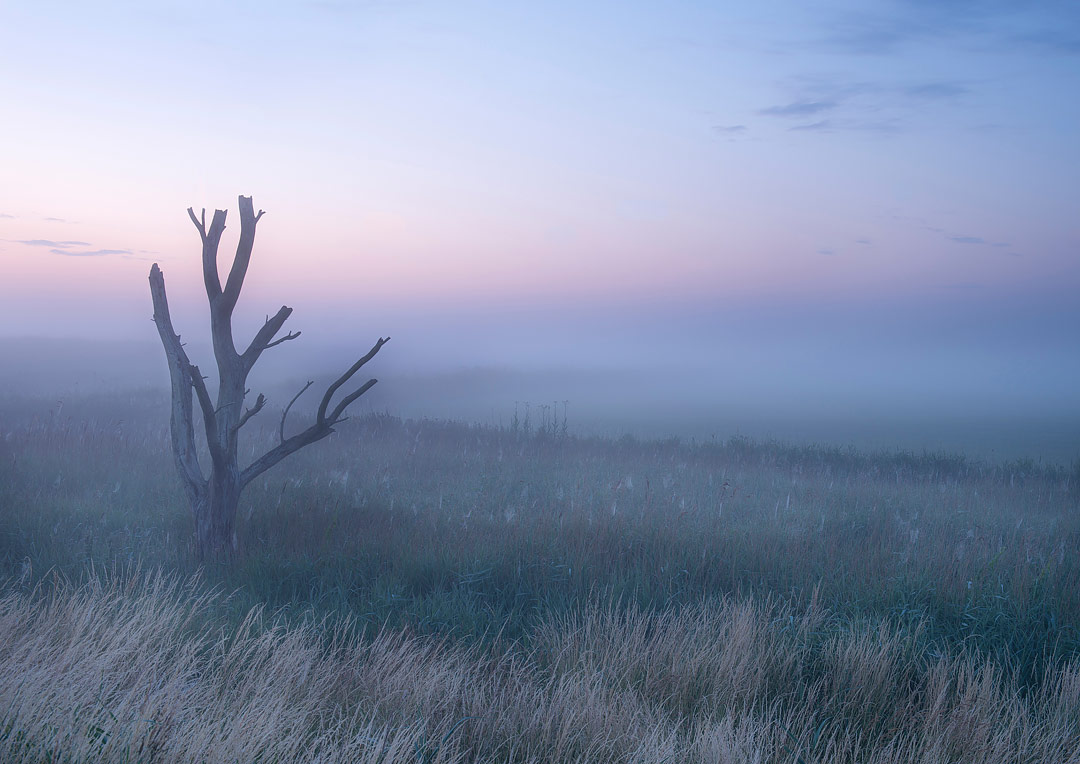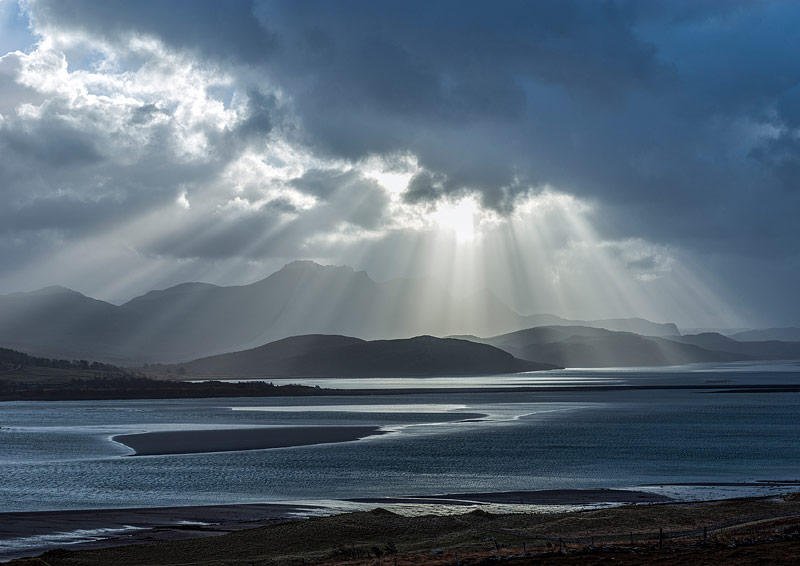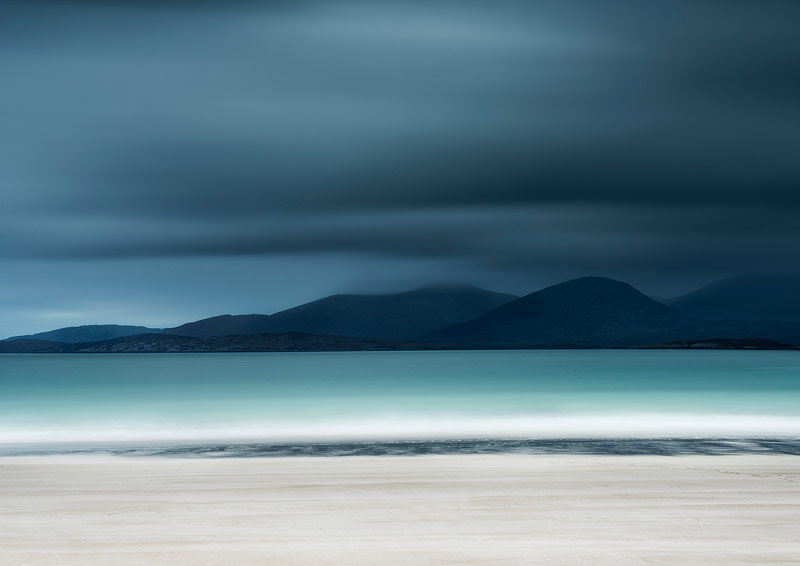Once the gallery has confirmed the space and dates, the work begins, sometimes nearly a year before the actual exhibition. The title of my exhibition is Elemental but in reality, it is far from elemental if you are going to create a visual display that captures the interest of many, rather than the few.
Before selecting the pictures, work needs to take place around the theme. For me, Elemental meant selecting and shooting landscape photographs that focused on the interplay between the elements as they transform the landscape. The photographs needed to show how the elements influence not only the physicality of the landscape, but also our emotional response to it.
Once this was decided, I needed to plan how the elements earth, air, water and so on would feature in the photographs and how they would complement and coexist with one another in the gallery. Visiting the space many times is essential if your work is going to look polished and professional. Not all galleries cater for all types of work, so deciding how the photographs are going to be displayed before you select the photographs is essential.
We all know that photography is about light; the importance of this cannot be over-emphasised. We are not just recording objects such as trees, beaches, mountains and so on. Rather, we are recording how lines, forms and textures interact with one another and how the light reveals these compositional elements. We choose these compositions and expose the scene according to how we interpret it. Each one of us will do this differently. So, in selecting the photographs for the exhibition I had to ensure the theme was adhered to as well as choosing the photographs that directed the viewer’s attention due to the interplay of light and form. It is essential to analyse the distribution of light within the photograph before printing. The areas that have too much contrast or too much light often direct the viewer away from the main focus of the photograph. Making notes on each photograph before it reaches the print stage really does help you pinpoint what you want to achieve in the final print. I use the word final as printing a good photograph often takes more than one print, if you want to emphasise certain features or details. Looking at the print over time also helps you to spot flaws or areas you want to change or improve. All of the photographs I selected for the exhibition were colour, not because I dislike black and white but because I felt that mixing the two genres presented difficulties for curation and for the viewer. The next stage after selecting the photographs is to process them.
We all process images using a variety of techniques and software. I prefer Camera Raw and Photoshop CC. I tend not to use presets as I think that each landscape photograph is individual and requires processing accordingly. I am also not a great fan of set styles. There will be many that disagree with me, but creating and maintaining one style limits creativity and creates a portfolio of images that look mostly the same. I do favour particular types of photography such as sea and coastal but that is really as far as it goes. Because of this, the selection of photographs prior to processing and printing is essential, if you are going to maintain some sort of congruence and continuity within the exhibition that holds the viewers’ attention and moves them on to the next photograph, and isn’t merely a set of photographs that you have selected randomly.
Each photograph selected was processed again in relation to the theme of the exhibition and in relation to the size of the photograph, even if I had previously carried out some processing on it. Nearly all of the prints are A3 plus or A2, with a few 8 by 8 inches square for a particular part of the gallery.
Processing and printing in colour required me to consider the intensities of colour in the frame along with the saturation and contrast to make the photograph say what I wanted to say. In other words, which emotions did I want to convey through the photographs and the use of colour within them – mystery, optimism, serenity, joy, inspiration and so on. A colour wheel can help you with this task – there are many available on the web.
The basics of a workflow are known to all photographers who process their own work, so I will not bore you with those apart from three aspects.
1) Ensuring there are no sensor marks on the negative
2) Getting the blacks and whites correct within the image
3) Making sure there is no chromatic aberration
After the basics are complete, the next stage is to use curves and masks within Photoshop cc. I use curves and masks as they offer endless possibilities to refine a print. For example, I can brighten or darken parts of the image like the sky so that the tonal balance is correct, adding or altering saturation and contrast, selecting parts of the image to work on by using the lasso tool and then using a curve to alter and adjust. I use the blend mode luminosity mainly as it is subtler, whereas the blend mode normal affects the hue saturation and luminosity. Finally, I sharpen using raw and smart sharpen.
Printing on a professional Epson printer linked to an iMac means a quality print is guaranteed if the processing is correct and the screen calibrated correctly. It does not, however, mean you get the print you want necessarily, so live with the print for a few days and then decide if you want to work on it any more. The choice of paper is important also and for me, it is Permajet FB satin 310g and FB Matt 285g. It is intensely satisfying to see your print finally emerge from the printer looking exactly as you want it to look! This is the real joy of photography after all, seeing the final product in a large print.
Once you have all your prints ready and collated for framing, the decision as to how to frame enters the scene. My choices are an Arqadia museum off-white mount board with a 1.5 inch black frame, plus a version of True Vue glass that does not reduce clarity or sharpness but does reduce reflections from various lighting sources.
Finally, you have the advertising and marketing, organising the private view, printing your postcards, ensuring your labels are printed on quality mount board in a set style, writing your artist statement and, of course, hanging the photographs to display them at their very best. If and when you have got all this done, you just hope that people come and like your work.

High Definition Feature • Access it in issue 92
You can read this feature in high definition inside the magazine. See our special offer below and subscribe today. Enjoy content by world class landscape photographers.





